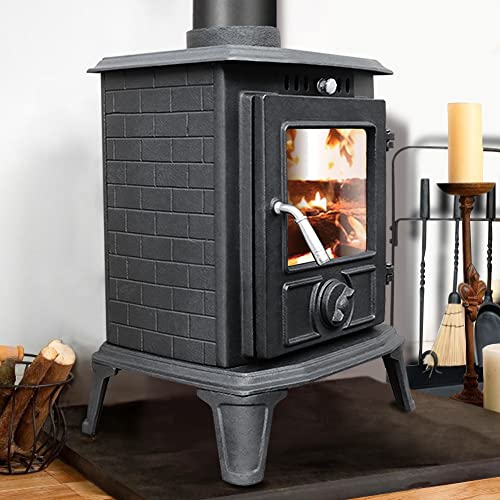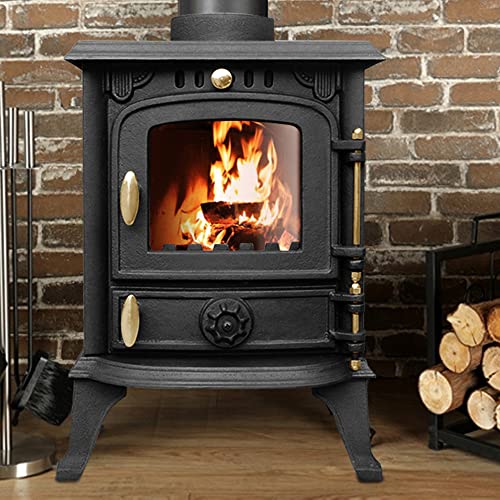14 Smart Strategies To Spend Extra Wood Burner Fireplace Budget
페이지 정보
작성자 Antonio 작성일24-06-08 13:40 조회28회 댓글0건본문
 How to Get the Most From a Wood Burner Fireplace
How to Get the Most From a Wood Burner FireplaceWood stoves, in contrast to traditional open fireplaces, are engineered to use wood for combustion. This allows them meet stricter emission regulations.
Wood burning stoves create sparkling yellow flames and soft crackling noises. They also give a primal feeling of warmth. However the smoke that it produces includes carbon monoxide and harmful air pollutants, such as formaldehyde, benzene and polycyclic aromatic hydrocarbons.
Efficient
Fireplaces and stoves that burn wood offer a stunning and natural heat to the home, and they are incredibly efficient. A top-quality wood burner could be eco-friendly up to 77 percent. With the rising cost of energy, it is important to ensure you are getting the maximum benefit from your log burner The good thing is that this is much easier than ever before!
A key factor in the effectiveness of a wood-burning stove can be in the moisture content of the firewood. We recommend using only seasoned wood that has been dried over a period of at least one year, and in some cases, two years. The dryer the wood is the more efficiently it burns, which means less smoke and less harmful emissions.
A wood burning stove offers the advantage of being an eco-friendly fuel source which is great for the environment. Additionally, by purchasing locally-sourced firewood, you're helping to promote the management of woodlands which is a wonderful thing for wildlife.
The only thing a wood-burning stove requires in terms of maintenance is to take away and dispose of ash. It can be a bit of a hassle but it's worth it to get the maximum heat from every log. In addition when you wait for a couple of days for the ashes to fully cool and then reuse them to make an eco-friendly and non-toxic ice melt. They can also be used to polish jewellery and remove odors.
A fireplace with a wood burner is a truly timeless classic. While they may be less popular than gas fireplaces but there's no denying the charm and allure of a roaring log fire. They are ideal to snuggle to on cold winter nights, and they make a warm and inviting space in your home. Making the investment in a top-quality wood stove will pay off for a long time. Contact us today to find out more about how our skilled chimney sweeps can help you get the best out of your stove.
Low Carbon
Wood burners that are clean and efficient are among the best ways to save the cost of logs while keeping your home warm. They also support local woodland management. This is an excellent way to support the wildlife that lives in your neighborhood.
Wood-burning Fireplaces And Stove and stoves create very little pollutant if they are maintained properly and are used with dry, seasoned and dry firewood. If they aren't maintained properly or make use of wood that is not of high quality, the smoke that is produced is a result of fine particles, commonly referred to as particulate pollution that can cause irritation to the lungs and other body organs. Carbon monoxide, toxic air pollutants like formaldehyde and benzene and polycyclic aromatic hydrocarbons are also in the. Inhaling this type of air pollution could cause lung irritation wheezing, coughing and asthma attacks and may even lead to serious health conditions such as cancer, heart disease, or premature death.
Many people are concerned that using a wood burning stove could contribute to climate change, but this is not necessarily the case. The combustion of wood produces energy that is carbon-neutral. The tree absorbs carbon dioxide throughout its lifespan. When it is burned, the carbon is released into the atmosphere.
As the wood is sourced locally, this reduces the amount of pollutants released in the process of transportation. It is also important to select top quality woods that are seasoned and seasoned as they will have an extended and even burn than softwoods.
Modern wood stoves, such as the ones manufactured by Charlton & Jenrick, emit significantly less pollutant than older stoves. They have been tested and certified to meet the 2020 EPA standards which are much more stringent than the previous emission limits.
All wood burning stoves must be fully vented to the outside of your home to ensure that they do not create a build-up of exhaust inside your home. All our current DEFRA-exempt and clean burn stoves can produce very clear exhaust by keeping the flames above the wood logs and using dry and seasoned firewood.
A wood-burning stove that has a hybrid unit or catalytic converter could be the most efficient low carbon heating option. These units ignite the gasses and particulates from the initial combustion at a later stage by mixing them with superheated air. The remaining gases and particulates are then transferred to a catalytic unit to create a final and third combustion. This further reduces emissions to levels far below government standards.
Clean Burn
Cleanburn wood stoves burn fuel at the highest efficiency possible. This results in the emission of very small particles into air when burning wood. The air management system of the stove regulates the intake and exhaust of gases to ensure the combustion process takes place in a controlled and sealed environment. It also regulates the flame's height to minimize emissions and increase the heat output.
This means that your chimney and surrounding area will be much cleaner than older stoves. Particulate matter (also known as particle pollution) from incompletely combusted wood causes respiratory issues like coughing and wheezing in people and can lead to the development of heart diseases, stroke, diabetes and other serious health conditions. Wood burning can also contribute to poor air quality in cities.
The smoke from poorly combusted wood contains fine particulate pollution and hazardous air pollutants like carbon monoxide volatile organic compounds nitrogen oxides, benzene, formaldehyde, and polycyclic aromatic hydrocarbons. These particles can penetrate deep into the lungs, and other organs, causing discomfort and harm, and even death. Dust particles from the air can also damage the surfaces in your home and give an unpleasant sludge-like feel to rooms.
It is important to select top quality, seasoned, and dried firewood when using your fireplace with a wood burner. Hardwoods like oak beech, ash and are the best for heating. Hardwoods have a higher density and BTU content. They also offer more heat than softwoods.
Contact your local authority to find out whether they have rules about wood burning. These could include nuisance/odor regulations and visible emissions or the opacity limit for smoke.
It is important to keep the glass of a wood stove that has a glass front free of deposits and dirt. You can use a dry towel or oven cleaner spray for this. You can also mix bicarbonate of a soda with a bit of water to the glass.
Regular maintenance is essential for your chimney and stove. This includes regular chimney cleanings to remove creosote and ensure proper functioning of the flue. It is also important to mark the dates of your periodic inspections on your calendar. This will help you to avoid costly repairs and prolong the life of your wood stove.
Low Maintenance
Wood burning fireplaces are popular due to their natural warmth. This kind of fireplace needs some maintenance and upkeep. The chimney, flue and stove can all be the cause of house fires, if they're not cleaned and maintained regularly. These fireplaces also provide heat in the event of an electrical outage, particularly during winter storms, when tree branches can fall and power lines can be knocked down.
 Utilizing a wood burner for heating will reduce your carbon footprint significantly in comparison to other fossil fuel sources, such as gas. Modern wood stoves and inserts have been designed to conform to EPA (Environmental Protection Agency) standards, which means that they produce very low emissions. The more well-seasoned the wood is, the more efficient it will be which means you'll burn less of it to produce the same amount of heat.
Utilizing a wood burner for heating will reduce your carbon footprint significantly in comparison to other fossil fuel sources, such as gas. Modern wood stoves and inserts have been designed to conform to EPA (Environmental Protection Agency) standards, which means that they produce very low emissions. The more well-seasoned the wood is, the more efficient it will be which means you'll burn less of it to produce the same amount of heat.The fireplaces need some maintenance and care. They should be placed away from combustible material and have a screen installed. Keeping the grate clear of debris and ash will help air flow and prevent the fire from dying too quickly and keep your indoors clean. You should have your chimney and stove swept at least once a year to prevent creosote build-up, which can be a fire hazard and obstructions that could hinder circulation.
A wood-burning stove has to be maintained on a regular basis and it can take a while for a beginner homeowner to understand how to ignite, light and maintain a constant fire in the fireplace. However, once you have achieved the art of creating and maintaining an open flame in your wood burner, it can be a source of enduring pleasure that can provide heat and warmth for your home all year long.
Wood burning fireplaces have been around in some form or another for over 500 years and they've regained popularity because of their efficiency and sustainability, as well as the natural warmth and smell of real wood. If you're considering a new heater, talk with your local Regency certified dealer to find out more about the benefits of a wood stove or an insert for your home.
댓글목록
등록된 댓글이 없습니다.

